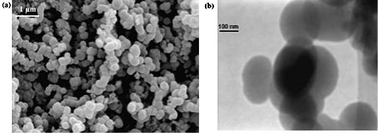Carbon nanospheres: synthesis, physicochemical properties and applications
Abstract
The discovery of

* Corresponding authors
a
Department of Chemical Engineering, Faculty of Chemistry, University of Castilla-La Mancha. Avd/Camilo José Cela 12. 13071, Ciudad Real, Spain
E-mail:
antonio.nieto@uclm.es
Fax: +34 926295256
Tel: +34 926295300, ext.3509
b Faculty of Chemistry, Universidad Autónoma del Estado de México, Paseo Colón, esq. Paseo Tollocan s/n, Toluca, Estado de México
The discovery of

 Please wait while we load your content...
Something went wrong. Try again?
Please wait while we load your content...
Something went wrong. Try again?
A. Nieto-Márquez, R. Romero, A. Romero and J. L. Valverde, J. Mater. Chem., 2011, 21, 1664 DOI: 10.1039/C0JM01350A
To request permission to reproduce material from this article, please go to the Copyright Clearance Center request page.
If you are an author contributing to an RSC publication, you do not need to request permission provided correct acknowledgement is given.
If you are the author of this article, you do not need to request permission to reproduce figures and diagrams provided correct acknowledgement is given. If you want to reproduce the whole article in a third-party publication (excluding your thesis/dissertation for which permission is not required) please go to the Copyright Clearance Center request page.
Read more about how to correctly acknowledge RSC content.
 Fetching data from CrossRef.
Fetching data from CrossRef.
This may take some time to load.
Loading related content
